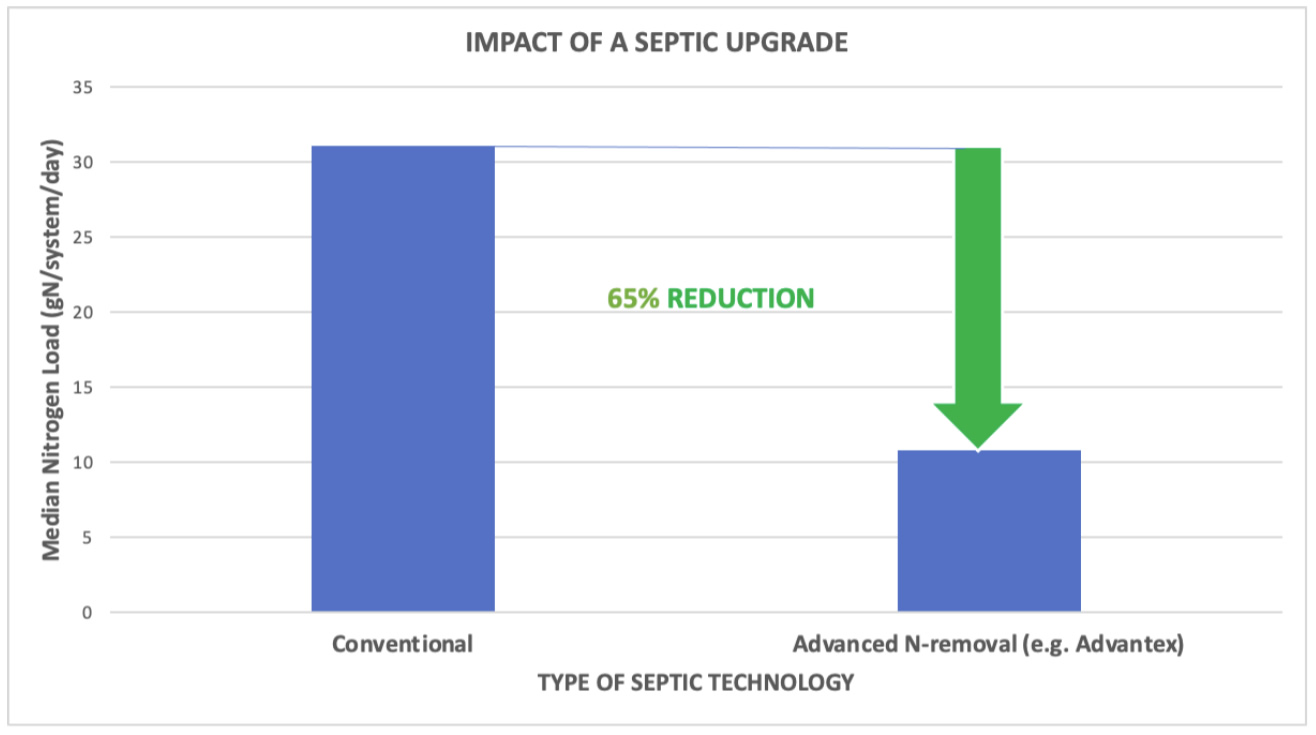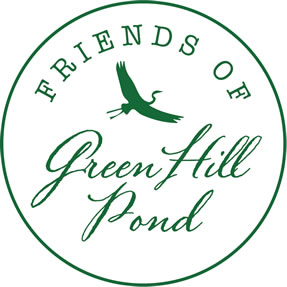Reduce High Nitrogen Levels Through Septic Upgrades

Onsite wastewater treatment systems (OWTS) are the only way wastewater is treated in the Green Hill Pond watershed since no public sewer is available. The vast majority of OWTS in this area use old conventional technology consisting of a tank and a drainfield. A 2018 study of OWTS in Rhode Island found that using advanced nitrogen removal systems such as Advantex, MicroFAST, or SeptiTech reduces nitrogen loading by roughly 65% over conventional systems.

Source: Amador, J.A. et al, Nitrogen Loading from Onsite Wastewater Treatment Systems in the Greater Narragansett Bay (Rhode Island, USA) Watershed: Magnitude and Reduction Strategies, Water Air Soil Pollution, (2018). https://doi.org/10.1007/s11270-018-3714-4
Since 2008, DEM has required the upgrade of all substandard and conventional OWTS to N-reducing technology for any new construction or failing OWTS in the watersheds of the salt pond. Although helpful, this approach falls far short of cleaning up Green Hill Pond.
Rapidly upgrading conventional septic systems to N-reducing technology will likely have the most impact. However, that will require substantial new funding and will take years. We are also pursuing other initiatives to make low-cost short-term improvements.
MAJOR INITIATIVES
- OPTIMIZE THE EXISTING SEPTIC SYSTEMS. Without new funding, we can do a better job of optimizing what is already in place to reduce nitrogen loading.
– CESSPOOL PHASE OUT. Cesspools are required to be eliminated in South Kingstown. We are working with the Town to help address the remaining cesspools.
– OWTS INSPECTIONS. Work with the Town to ensure all OWTS systems in the Green Hill Pond watershed are inspected and optimized. Also, work with the Town to ensure that all failing systems are repaired or replaced promptly. - TARGET NITROGEN HOT SPOTS. Working with URI, seek outside funding to develop the technology and methodology to identify nitrogen hot spots in Green Hill Pond. If successful, this information should help better target existing or new subsidies for septic upgrades.
- SEEK FUNDING FOR NEW UPGRADE SUBSIDIES. Working with the Town, seek federal and state funding to assist property owners with substandard OWTS upgrade to N-reducing technology in the densely developed areas.
- TRACK PROGRESS ON NATURE-BASED SOLUTIONS. One idea that is being field tested by several organizations is using shellfish like oysters and clams to filter out nitrogen and bacteria. We will track progress in this and other nature-based solutions. If any appear highly promising to address Green Hill Pond issues, we will help organize a project.
